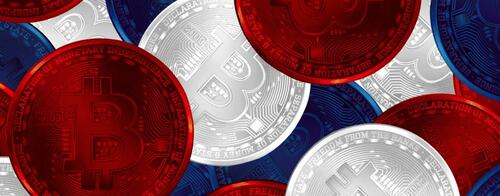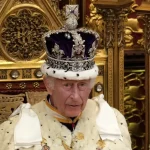
Authored by 'BTCCasey' via BitcoinMagazine.com,
The Treasury’s statements explore the potential forms and implementations of an American CBDC...
The U.S. Department of the Treasury has released comments from Undersecretary for Domestic Finance Nellie Liang on the “Next Steps to the Future of Money and Payments,” addressing CBDCs and the approach the American government is taking to their potential implementation.
The original Treasury report released in September 2022 described the formation of a CBDC working group that would advance work on a CBDC. Liang’s remarks confirmed the formation of that group.
“One of the central tasks for the CBDC Working Group is to complement the Fed’s work by considering the implications of a U.S. CBDC for policy objectives for which a broader Administration perspective is helpful,” Liang said.
“To give you a sense of how we are pursuing this work, I will describe our approach to thinking about CBDC options, the policy questions we are attempting to answer, and the kinds of recommendations we hope to develop.”
Highlights from this description include a look at the potential forms that a CBDC could take, the potential for a separate retail and wholesale CBDC and the possible core features of the CBDC.
Also discussed is the idea that a “potential U.S. CBDC, if one were created, would best serve the United States by being ‘intermediated,’ meaning that the private sector would offer accounts or digital wallets to facilitate the management of CBDC holdings and payments. In terms of technology, a retail CBDC might involve a different architecture compared to a CBDC that is intended solely for wholesale use.”
In his piece for Bitcoin Magazine, Mark Goodwin described how Bitcoiners may have “spent so much time looking for CBDCs, we missed the private-entity stablecoin monster right in front of our eyes.”
The Treasury’s released remarks suggest that a CBDC may well come on the backs of private entities, with major incentives to participate. The United States has gotten serious in regards to its consideration of a CBDC. And all this just as legislation has been introduced by Republican lawmakers that would “prohibit the Federal Reserve from issuing a CBDC directly to anyone.”
Although this bill may not have much of a chance of passing, notable is the specific angle of preventing a Federal CBDC, potentially leaving free those “intermediated” by private parties.
The remarks also described how a CBDC is one of many directions for the government to take, another being real time payment systems. The Federal Reserve, according to Liang, “has indicated that it expects to launch the FedNow Service this year, which will be designed to allow for near-instantaneous retail payments on a 24x7x365 basis, using an existing form of central bank money (i.e., central bank reserves) as an interbank settlement asset.”
This would differ from a CBDC in that it would utilize an existing form of central bank money versus the new form a CBDC would introduce, in addition to a potential new set of payment rails.
Regardless of the path that the Treasury takes, new payment systems are seemingly on the horizon for the United States.
Authored by ‘BTCCasey’ via BitcoinMagazine.com,
The Treasury’s statements explore the potential forms and implementations of an American CBDC…
The U.S. Department of the Treasury has released comments from Undersecretary for Domestic Finance Nellie Liang on the “Next Steps to the Future of Money and Payments,” addressing CBDCs and the approach the American government is taking to their potential implementation.
The original Treasury report released in September 2022 described the formation of a CBDC working group that would advance work on a CBDC. Liang’s remarks confirmed the formation of that group.
“One of the central tasks for the CBDC Working Group is to complement the Fed’s work by considering the implications of a U.S. CBDC for policy objectives for which a broader Administration perspective is helpful,” Liang said.
“To give you a sense of how we are pursuing this work, I will describe our approach to thinking about CBDC options, the policy questions we are attempting to answer, and the kinds of recommendations we hope to develop.”
Highlights from this description include a look at the potential forms that a CBDC could take, the potential for a separate retail and wholesale CBDC and the possible core features of the CBDC.
Also discussed is the idea that a “potential U.S. CBDC, if one were created, would best serve the United States by being ‘intermediated,’ meaning that the private sector would offer accounts or digital wallets to facilitate the management of CBDC holdings and payments. In terms of technology, a retail CBDC might involve a different architecture compared to a CBDC that is intended solely for wholesale use.”
In his piece for Bitcoin Magazine, Mark Goodwin described how Bitcoiners may have “spent so much time looking for CBDCs, we missed the private-entity stablecoin monster right in front of our eyes.”
The Treasury’s released remarks suggest that a CBDC may well come on the backs of private entities, with major incentives to participate. The United States has gotten serious in regards to its consideration of a CBDC. And all this just as legislation has been introduced by Republican lawmakers that would “prohibit the Federal Reserve from issuing a CBDC directly to anyone.”
Although this bill may not have much of a chance of passing, notable is the specific angle of preventing a Federal CBDC, potentially leaving free those “intermediated” by private parties.
The remarks also described how a CBDC is one of many directions for the government to take, another being real time payment systems. The Federal Reserve, according to Liang, “has indicated that it expects to launch the FedNow Service this year, which will be designed to allow for near-instantaneous retail payments on a 24x7x365 basis, using an existing form of central bank money (i.e., central bank reserves) as an interbank settlement asset.”
This would differ from a CBDC in that it would utilize an existing form of central bank money versus the new form a CBDC would introduce, in addition to a potential new set of payment rails.
Regardless of the path that the Treasury takes, new payment systems are seemingly on the horizon for the United States.
Loading…





